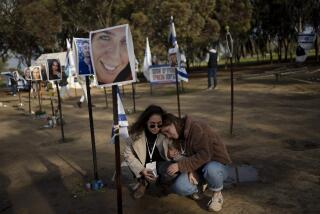Book Review : Chronicling the Changes in Chinaâs Intellectual Climate
Cold Winds, Warm Winds: Intellectual Life in China Today by Judith Shapiro and Liang Heng (Wesleyan University: $17.95)
The introduction here is worth quoting fairly extensively: âThis book is based on two studies of the climate of intellectual freedom in China that the authors made for the Asia Watch Committee of the Fund for Free Expression. The first was written when the autumn, 1983, campaign against âspiritual pollutionâ had just ended, and Chinese intellectuals in China and abroad were alarmed to see what appeared to be an upsurge of the dogmatic leftism of the Mao era. . . . In early 1985 we had the opportunity to return to China for three months. We found one of the freest intellectual climates since before the Cultural Revolution. The negative effects of the campaign against spiritual pollution had been much less long-lasting than we had initially feared, and many campaign victims with whom we spoke had regained their earlier status.â
Different Expectations
Letâs digress for a moment into the area of expectations. The reader who keeps up at all with books out of China, or on the subject of contemporary China, will remember Liang Heng and Judith Shapiro as the co-authors of âSon of the Revolutionâ (Knopf and later Vintage), the harrowing tale of Liang Heng himself as a tortured orphan of the Cultural Revolution--a young boy who was battered mercilessly by national forces, grew up to be a student and basketball player, fell in love with a nice foreign student--Judith Shapiro--and was able, almost as a miracle, to bail out of his native land to the comparative stability of the United States. Now, obviously, itâs inappropriate to expect a book on intellectual life to equal that terrific combination of tall tale and what the Chinese call âscar literatureâ (stories of the physical and emotional scars or wounds endured during the Cultural Revolution). But it is appropriate to expect it to be lively, interesting, readable.
âCold Winds, Warm Windsâ is none of these.
This volume may fairly be expected to be âscholarship.â (It is, for instance, published by a university press; it purports to be about âintellectualâ life.) But take a look at a quote like this, describing âthe Tiananmen Incident of April 5, 1976,â when âMao was not yet dead and the Gang of Four was still in power. . . . Premier Chou En-lai, who had been much loved for his attempts to moderate the impact of leftist policies by protecting intellectuals, historic sites, and religious shrines, had died in January of that year. The Gang of Four announced that there would be no ceremony for Chou on the traditional day for remembrance of the dead. Nevertheless, thousands of people went spontaneously to Beijingâs Monument to the Heroes of the Revolution in Tiananmen Square and presented wreaths, put up posters, and read speeches and poems. Many of these were pleas for democracy and an end to imperial-style dictatorship.â
Remember, this is a terribly short book, 211 pages. Thereâs half a page right there spent on something that anyone who might be expected to read this book already knows : If anything, Heng and Shapiro might have quoted Roger Garsideâs âComing Alive: China After Mao,â printed in 1981, in which Garside describes the incident, remembering to write that thousands of Chinese brought along their bikes and rang those bells to make an eerie music. . . .
Whoâs the Audience?
My point is: Whoâs the audience for this? Anyone who knows even a smattering about the Cultural Revolution knows about the Tiananmen Incident. They also know that during the awful 10 years from 1966 to 1976 âthe individual had little value except in the service of the party and the state, and love was considered counterrevolutionary; religious expression was suppressed, and monks, imams, priests and ministers killed, jailed, or sent to the countryside; minority ethnic groups were forbidden to live according to their customs; there was virtually no legal system and no court of appeal, and beatings, torture, induced suicide, and murder, particularly of intellectuals, artists, and high-ranking officials, were routine.â If someone already knows a little about the Cultural Revolution, a passage like this is almost insultingly elementary.
If the reader knows nothing at all of the Cultural Revolution and the changes that have occurred in China during the last 20 years, he would be far better served to pick up Liang Heng and Judith Shapiroâs first book, which covers the same facts, but in a specific, immediate and original way. The first 82 pages of âCold Winds, Warm Winds,â with its crude summations and tortuous prose style are far less âscholarshipâ than term paper.
More to Read
Sign up for our Book Club newsletter
Get the latest news, events and more from the Los Angeles Times Book Club, and help us get L.A. reading and talking.
You may occasionally receive promotional content from the Los Angeles Times.






